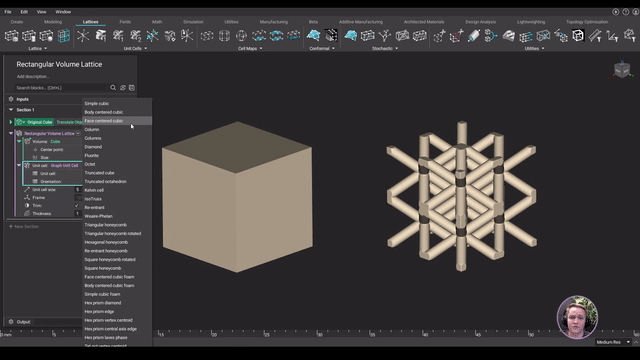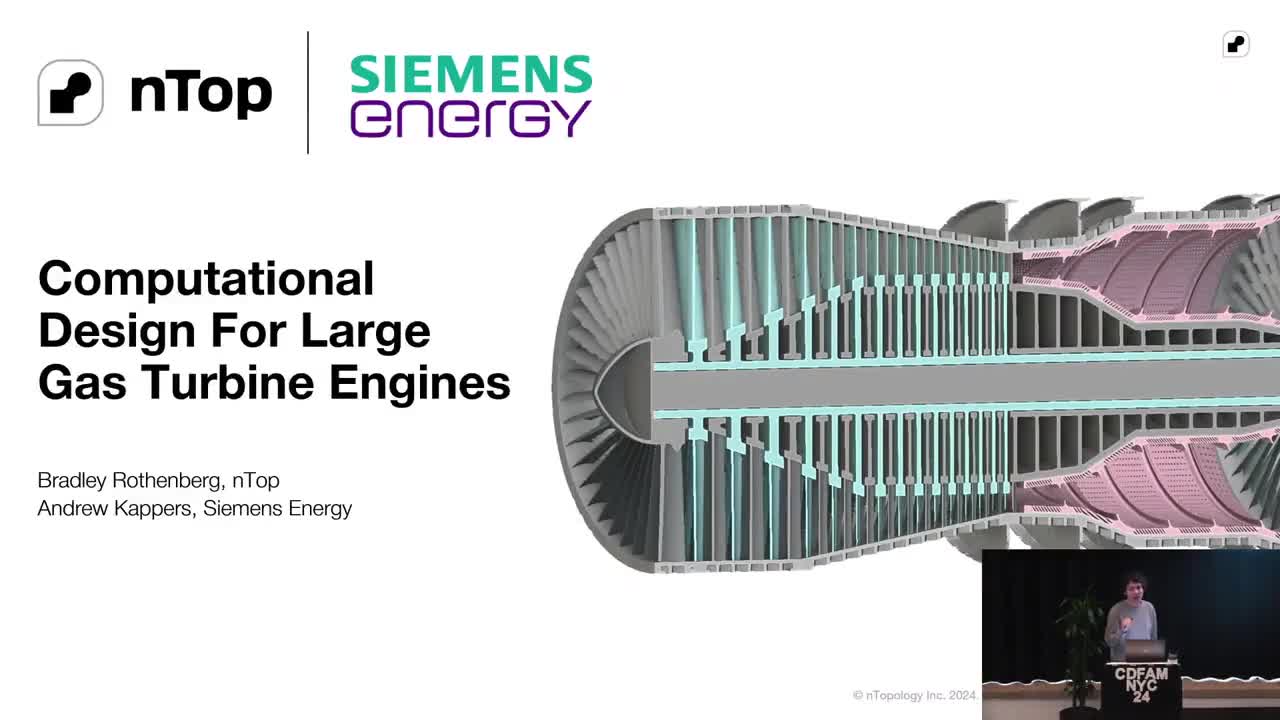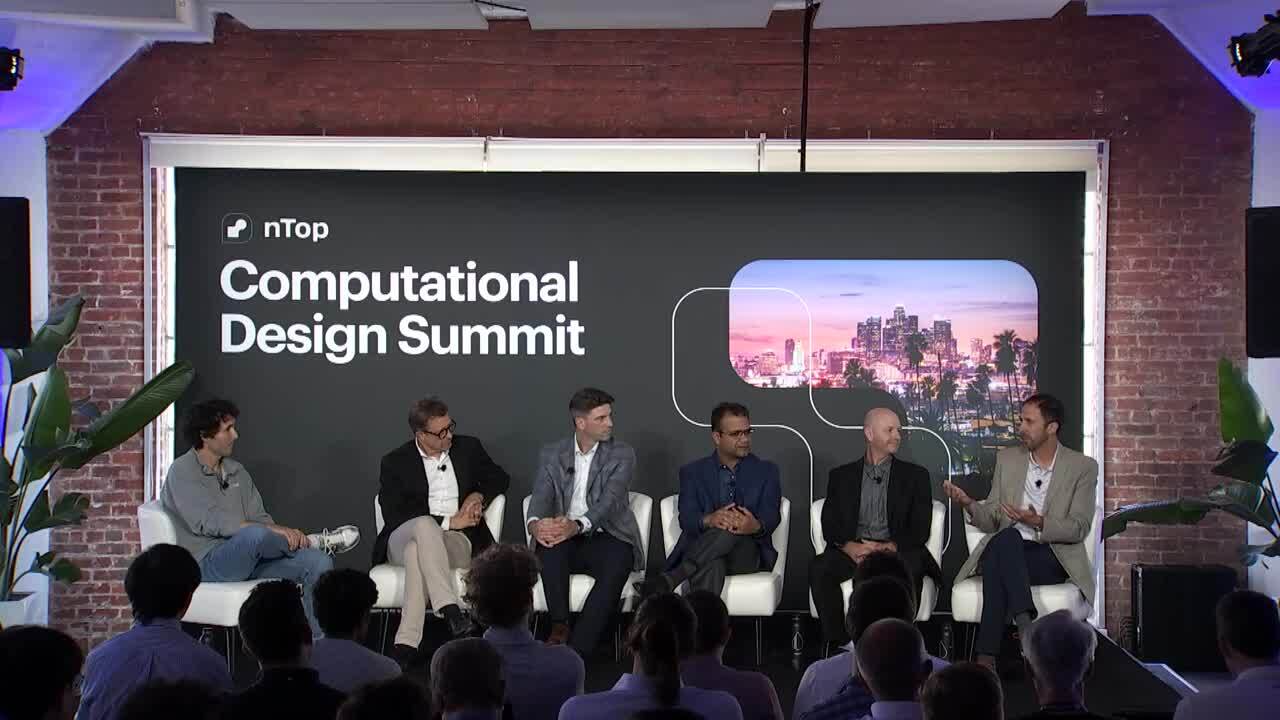Introducing nTop’s new latticing technology

Written by nTop
Published on June 1, 2022
We are excited to announce the release of nTop's 3rd generation latticing technology, the most advanced lattice generation tool available today!
If you’ve worked in the additive manufacturing space, you’ve probably heard that the lattice generation capabilities of nTop are best-in-class. However, we are constantly striving to set the bar higher.
Our old latticing technology limited our ability to develop new features that empower you to unlock an even broader range of 3D printing applications.
Today, we are releasing our new latticing technology, the most advanced design tools for lattice generation.
The new latticing tools are easy to use, faster than before, and offer greater control over complex lattice structures. They also provide the basic infrastructure for the revolutionary features coming up next.

Video demonstrating nTop's new latticing technology.
The new latticing technology release includes 37 blocks that have been in development over the past 22 months. We took the necessary time to perfect their capabilities, implement feedback from the nTop community, and prepare documentation for the transition.
Hundreds of nTop users are already using the new latticing technology. In fact, 45% of users doing latticing work in nTop were already using the new blocks even before their full release.
Easier to learn and use
Our goal was to make it as easy as possible for new nTop users to access the new latticing tools from the moment they start using the software.
For this reason, we separated the lattice generation processes into three fundamental steps: select a unit cell, define the cell map, and control lattice parameters (such as thickness).
Mastering these simple steps makes it faster and more intuitive to learn how to apply advanced latticing and DfAM techniques later.

The new tools separate the lattice generation process into three fundamental components: unit cell, cell map, and lattice parameters.
For existing nTop users, our goal was to make the transition to the new latticing technology a streamlined experience.
In the updated Lattices tab, you will find three new easy-to-use blocks that enable you to quickly replicate the outputs of workflows using the old latticing technology. You can use these blocks to transition your existing workflows to the new latticing technology at your own pace.
Lightning-fast lattice generation
When you transition your workflows to the new latticing technology, you may notice a significant performance increase, especially when working with lattices with a very high beam and unit cell count.
In one benchmark example, a lattice with 50,000+ unit cells used to take 45-60 seconds to generate on a well-equipped laptop. Now, it rebuilds in 1-2 seconds!
In other words, this is a 50x performance increase to the already fastest lattice generation tools.
Lattice structures with 50,000+ unit cells are now rebuilt in seconds. The results are rendered on your screen in real-time—thanks to GPU acceleration.
Greater level of control
For experienced nTop users, the new latticing technology comes equipped with a ton of new capabilities that streamline lattice design and optimization. These new tools enable you to create performance-driven lattice generation processes that have engineering requirements already built into your model. Here are some highlights:
Lattice warping
The new warping tools allow you to apply Field-Driven Design techniques to control the lattice cell map the same way you can control its thickness. Combining this feature with real-time visualization enables you to precisely tune those complex shapes. It also gives you a new and powerful way to design conformal lattices.

A pressure map controls the cell size of this cell map. The result is a shoe shole that is stiffer in areas that need more support.
Unified latticing workflow
Lattice generation now follows a unified workflow whether you are working with a graph, TPMS, or custom unit cell. This feature makes it far simpler to rapidly iterate between different lattice types, saving you time. It also makes it easier to set up computational Design of Experiments for optimization.

The new latticing blocks offer a unified design workflow for lattice design. You can exchange unit cell and cell map types to explore a broader design space faster.
Filter beam utilities
The new filtering utilities enable you to select lattice beams based on specific criteria like length, angle, connectivity, or thickness. This capability allows you to spatially control certain parameters of your lattice structures and optimize them for manufacturing.
Surface lattices
The new latticing technology gives you the ability to create cell maps that conform to the surface of a quad mesh. Surface lattices enable you to design conformal rib grids to increase the stiffness of bodies with even the most complex or organic shapes.

This surface lattice acts as a stiffening rib grid on this topology optimized body to further increase its strength without adding extra weight.
User testimonials and quotes
We asked a few nTop users to comment on the capabilities of the new latticing technology. Here’s what they have to say:
Ross Brown is an Additive Manufacturing Engineer at Marotta Controls and an expert nTop user. His current work focuses on developing high-performance products for marine applications.
Chelsea Cummings is a Digital Applications ADDvisor at Barnes Global Advisors. She works with clients to develop new 3D printed products and train them on the latest technologies.

The new Voronoi latticing tools enable you to cap the open beams (improving manufacturability) and calculate the porosity characteristics of the resulting structure.
What’s next?
The new latticing tools we are releasing today introduce some powerful capabilities, but they pale in comparison to what is coming next.
The new latticing technology infrastructure allows us to rapidly build revolutionary new optimization tools that will enable you to unleash future innovations. Here’s a preview of what is coming next:
Field-driven lattice optimization
The new latticing technology has laid the foundation for a novel and powerful field-driven optimization capability. We are currently testing new tools that will enable you to automatically generate lattice structures optimized for your specific engineering requirements, such as targeted stiffness or weight.

In this example, the cell size of the Voronoi lattice was automatically generated to achieve a targeted stiffness response.
Custom graph unit cells
If you want to use a unit cell type that is not already covered by the 30+ built-in unit cells, our R&D team is working on custom graph unit cells. Soon, you will be able to create your custom unit cells and define the associated design parameters, including beam thickness, length, and more.
Conformal lattice structures
Our team is already working on expanding nTop’s conformal lattice generation capabilities to complement the existing conformal latticing tools. You will soon be able to design lattice cell maps that conform to multiple surfaces or organic volumes.
Where can I learn more?
If you want to learn more about this release, our Help Center includes articles with an extensive technical FAQ section and a Latticing Technology Transition Guide to help you.
Moreover, our nTop experts have also prepared an introductory guide to lattice structures and a course on lattice structures to help you get started.
At nTop, we will continue to lead the development of lattice generation and other engineering design software tools for additive manufacturing. Stay tuned for many more exciting software updates in the not-so-distant future!

nTop
nTop (formerly nTopology) was founded in 2015 with the belief that engineers’ ability to innovate shouldn’t be limited by their design software. Built on proprietary technologies that upend the constraints of traditional CAD software while integrating seamlessly into existing processes, nTop allows designers in every industry to create complex geometries, optimize instantaneously, and automate workflows to develop breakthrough parts and systems in record time.




